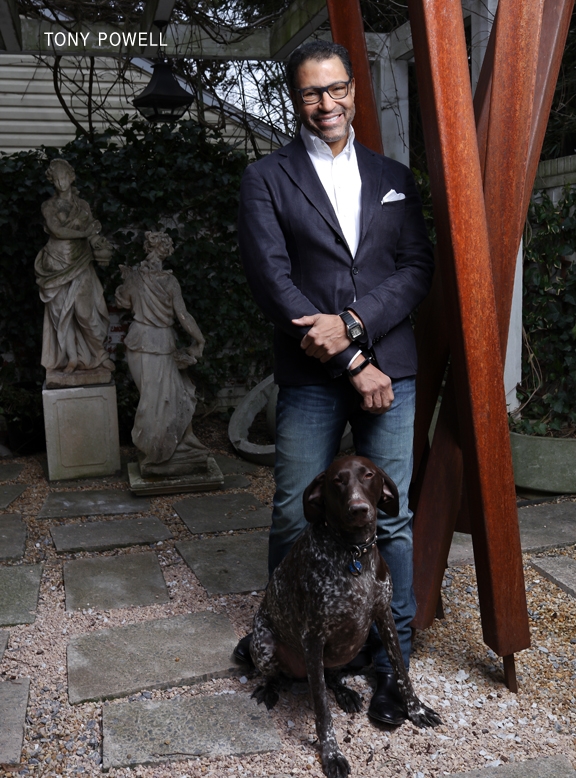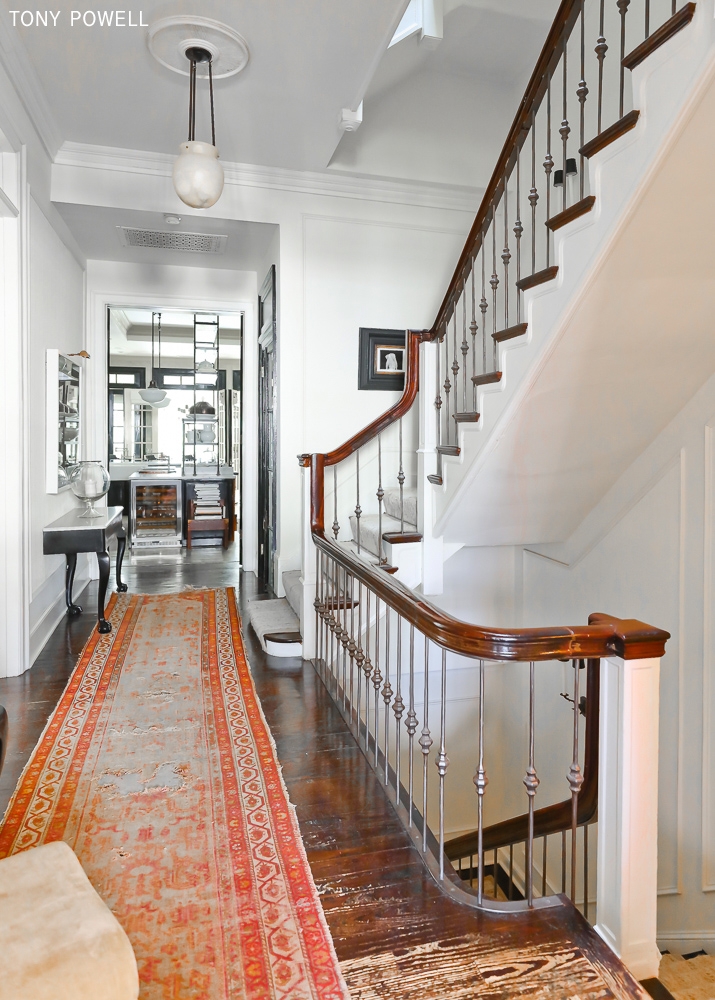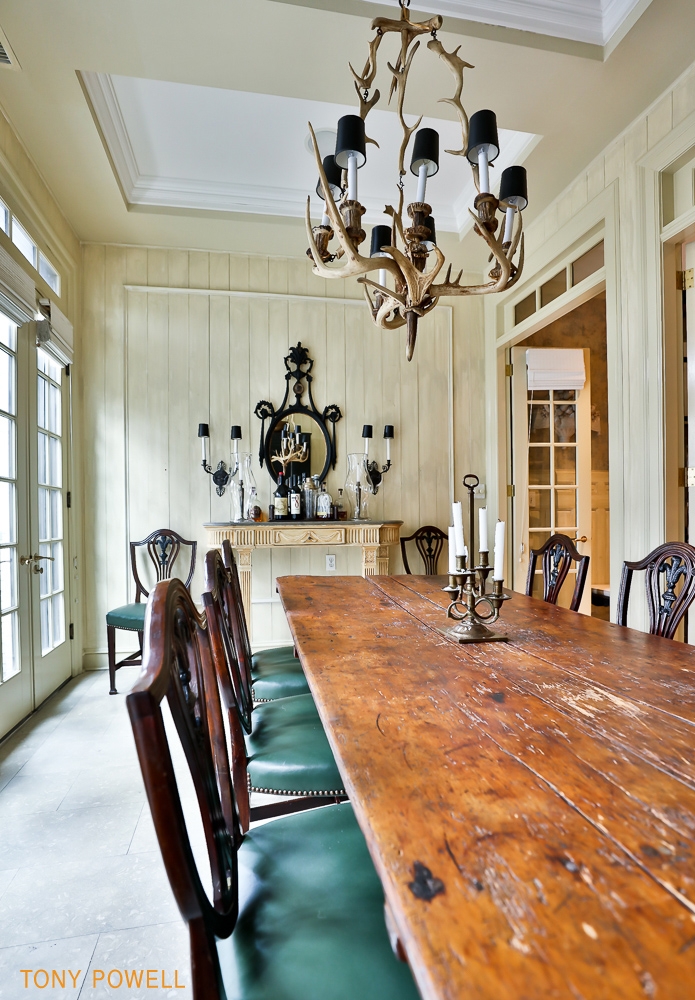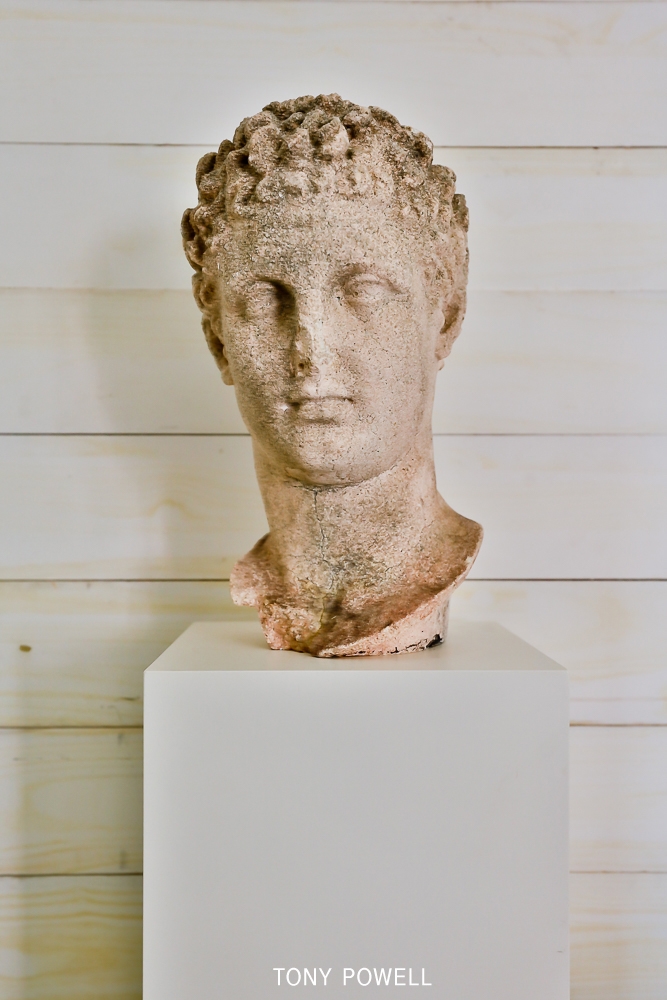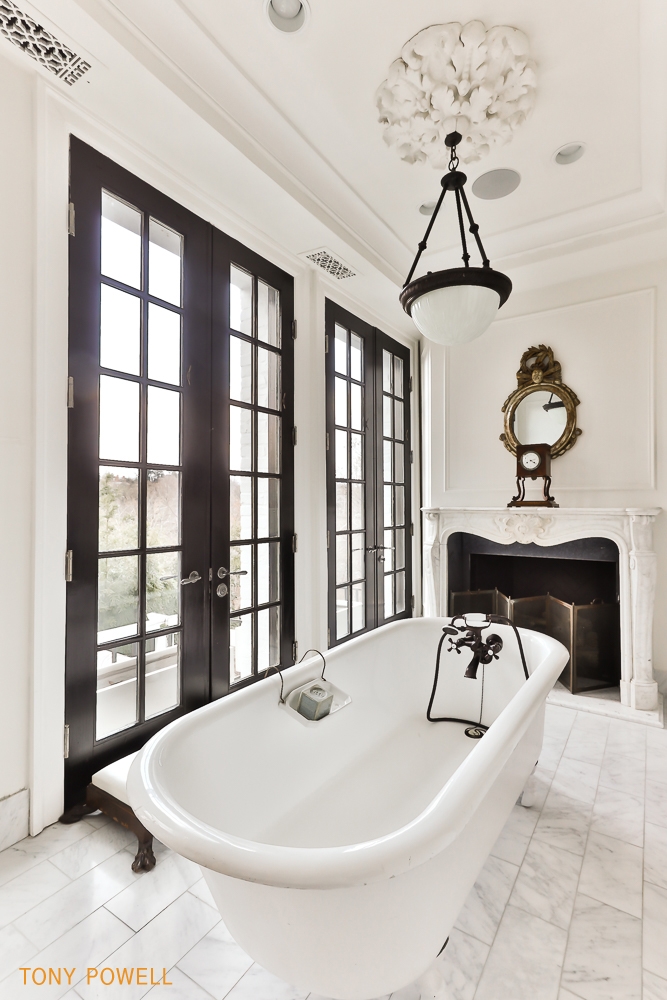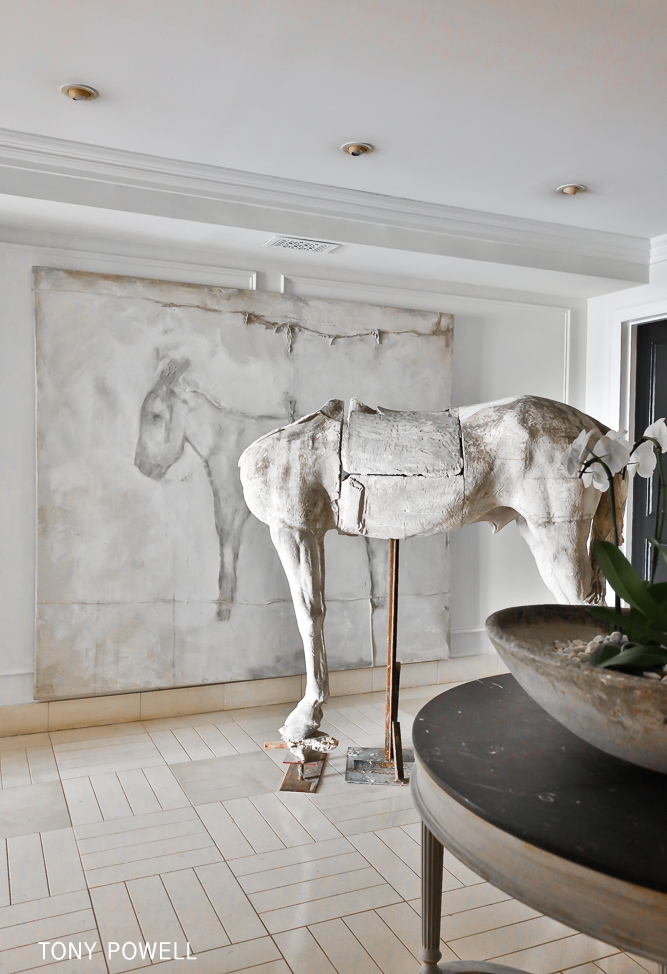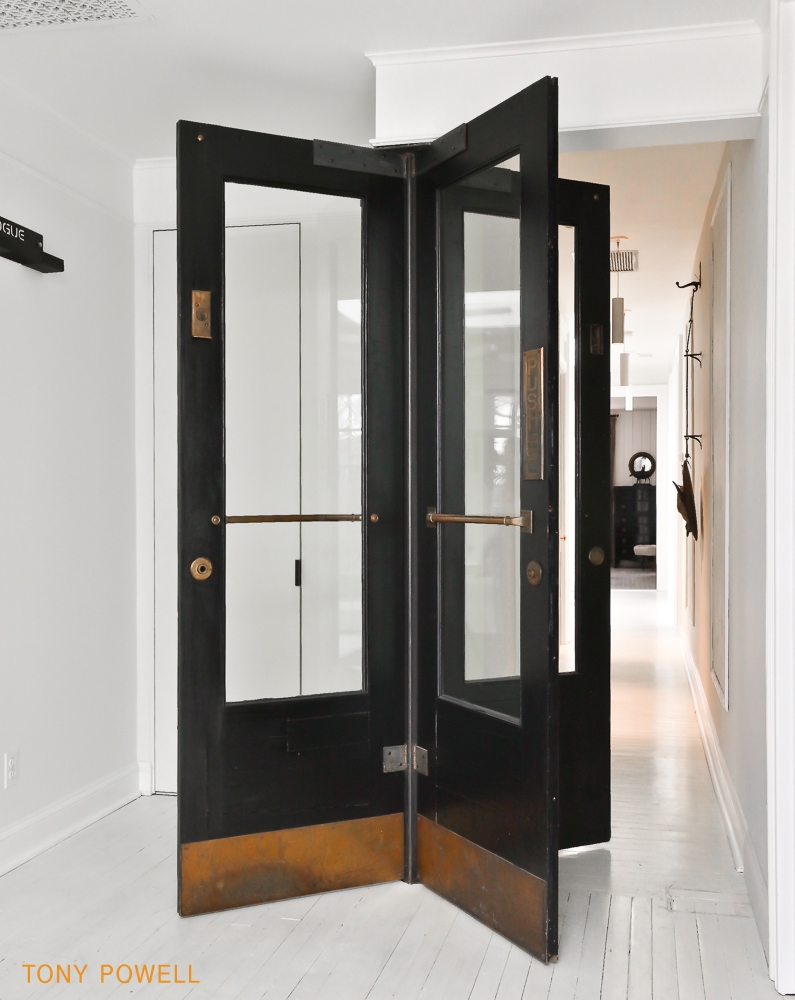Designer Darryl Carter’s 9,000-square-foot playground on Embassy Row exudes timeless style, comfort and a touch of humor.
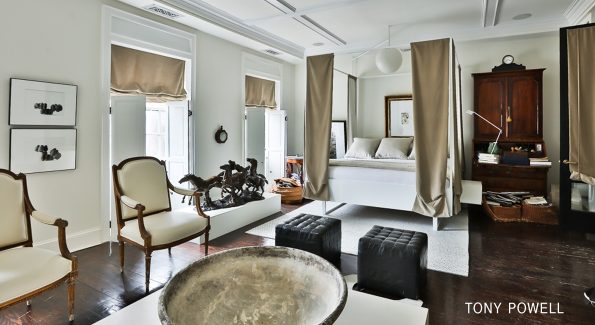
Carter, who refers to himself as an “apartment dweller” spends most of his time in his bedroom. The bedframe was designed by Carter.
Walking into designer Darryl Carter’s Beaux Arts home, formerly the Embassy of Oman, is akin to entering a different dimension, one where basic interior design rules as we know them hold no weight. In the foyer alone there is an antique rug cut, resewn, and flipped on its backside, pieces of art hung waist-height, a stack of granite slabs on the floor and a headless horse. The “We’re not in Kansas anymore,” sentiment strengthens after ascending to the formal dining room where a massive gilded mirror from the late psychic Jeane Dixon’s estate hangs behind a tangle of white metal bars Carter recently installed after getting bored with the traditional piece. Nothing is complete until it is messed with, he says, pointing to countless examples of toyed-with decor that constitute what the self-described “homebody” calls his 9,000-square-foot laboratory. Carter’s knack for repurposing and reinvention is what fuels him to think differently and problem solve while mixing old and new, unbound by trend or tradition.
The abundance of character Carter’s style exudes is a reflection of his backwards entrance into the field of design. His foray into practicing law with his father ended shortly after his elegant Kalorama Triangle condominium was featured in a book and subsequently the cover of Metropolitan Homes magazine. Despite having no formal training, a steady stream of wealthy, rarefied clients (none of whose names he will divulge) fell into his lap and the artistic journey he had always yearned for began. In retrospect, Carter can pinpoint telling signs of a creative itch.
As a young boy growing up in Bethesda, he used the punishment of being sent to his room as an excuse to rearrange bedroom furniture.

Wainscoting in the kitchen was sourced from an old Baltimore home. The étagère was moved around the house several times before landing on the counter to anchor the space.
His house is one of a few on Embassy Row that have unobstructed rear-facing views of Rock Creek Park. Since buying the real estate rarity in 1997, Carter has been on a steady pursuit of design nirvana, constantly adding, removing, rearranging and sometimes, defiling. “Nothing is sacred,” he says. Even as we were setting up for this article’s photo shoot, his team was shuffling art between floors.
Most of his prized finds are sourced from architectural salvage yards, which he endearingly calls his “happiest place on earth.
” “If I find something I think is uniquely beautiful, it will find a place,” Carter says, treating the five-story playground like a puzzle with ever- rotating pieces. His master eye strays away from anything shiny (literally and figuratively), gravitating to “stuff that’s been used, has a history and a sense of life.
”
Once laden with drab gray carpet, cubicle offices and drop acoustical ceilings from its embassy days, Carter’s goal was always to honor the house’s original architecture showing that his sensibility runs deeper than surface level design. “I really do tend to organically follow the architecture,” he says, joking that he can read blueprints upside down. In this way he is an architectural whisperer, preserving period design features whenever possible. Recently, Carter has found his taste leaning modern, evident in lighting schemes throughout the house where white streamlined pendants offset ornate design elements.
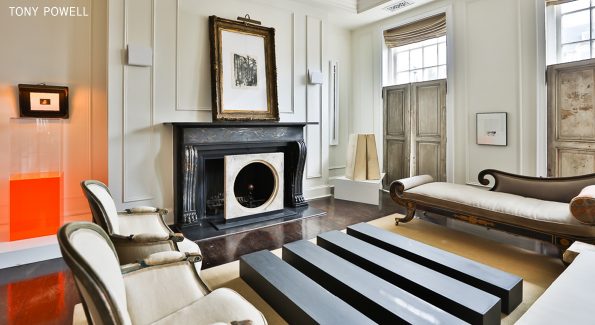
An orange light sculpture by Carter’s friend Robert Haft, chairs from the old Patterson Mansion and an antique settee that served as inspiration for a piece in Carter’s collection for Baker’s Milling Road furniture line.
Is it hard, we ask, using your home as a laboratory and never being able to separate personal life from work? “No it is therapeutic,” he responds without hesitation. Carter’s persistent evolution and his enormous business success go hand in hand. His dexterous work has appeared in prestigious magazines, including cover stories for Milieu and Elle Decor. He just released a collection for Baker Furniture’s Milling Road line and has a retail store and showroom in Shaw. Carter is also working on commercial projects, bicoastal brand expansion, a television show and a third book. Locally, he and his team of designers recently tackled their first restaurant projects, Michelin-starred Metier and Kinship as well as their first apartment building, Ampeer in Dupont, where they transformed common areas of the old Patterson Mansion into chic resident hangouts.
Carter calls himself a nuance-driven purist – true to style that stands the test of time and true to his innate vision free from finger-wagging textbook speak and those who say there is a right and wrong way to approach interiors. “If you don’t know what you’re not supposed to do, you don’t know what you’re not supposed to do,” he says with ease. “I am not about bells and whistles.
” Seekers of colorful mosaics, trendy patterns and tassels should look elsewhere, he says, explaining that his understated approach attracts a self-selecting roster of clients.
Demure as it may appear, Carter’s aesthetic is rooted in humor.
The headless horse that greets guests and framed New Yorker comics poking fun at traditional interior design in his powder room are what add “color” to his otherwise neutral palette, and give visitors a reason to smile. As much as the house may evolve, its ethos is unshakeable – proof that comfort and style are not mutually exclusive.
This article appeared in the April 2018 issue of Washington Life Magazine.
